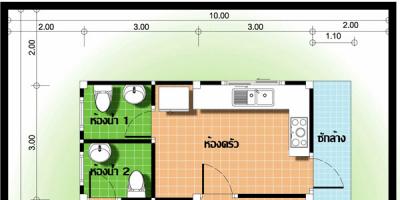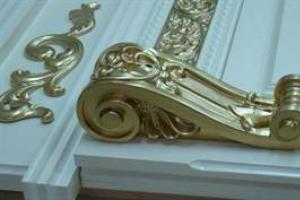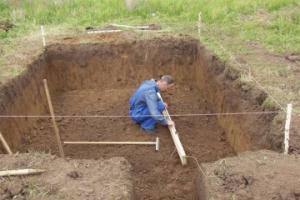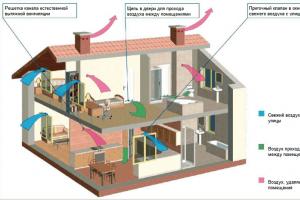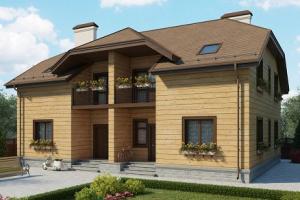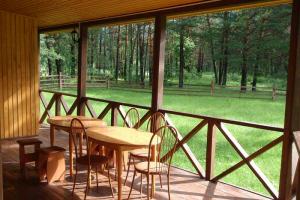The gas fire extinguishing system is an extremely effective installation for quickly extinguishing a fire at the initial stage of a fire. Its special value is the absence of additional damage by the fire extinguishing agent to the protected equipment, stored documents, and artistic values.
The inevitable effect of water, chemical foam, powders on building construction, interior decoration, furniture, office, household appliances, documentation during fire extinguishing often leads to direct and indirect material losses, quite comparable to those caused by fire and combustion products.
Filling the volume of the room with a mixture of inert gases that do not interact with burning materials quickly reduces the oxygen content (less than 12%), making the combustion process impossible. The following are used in gas fire extinguishing systems:
- liquefied gases - refrigerants (carbon - fluoride compounds used as refrigerants), sulfur hexafluoride (SF6), carbon dioxide (CO2);
- compressed gases – nitrogen, argon, argonite (50% nitrogen + 50% argon), inergen (52% nitrogen + 40% argon + 8% CO2).
The gases used and their mixtures up to certain concentrations (!) in the air are not hazardous to human health, and also do not destroy the ozone layer.
An automatic gas fire extinguishing system (AGS) is a set of storage vessels for liquefied, compressed fire extinguishing agents, supply pipelines with nozzles, incentive (signal and trigger) devices, and a control unit. There are several ways to enable ASGP:
- auto;
- remote;
- local.
The last two types are redundant, auxiliary methods that ensure the start of the fire extinguishing system in case of malfunctions of the automatic fire alarm system. They are used manually by trained company personnel, security personnel from the fire extinguishing station premises centralized system gas fire extinguishing system or from a system starting device installed in front of the entrance to the room.
Based on the type of facility protection by an automatic gas fire extinguishing system, there are:
Volumetric fire extinguishing systems.
They are used to quickly fill a room or group of rooms of a building with a gas mixture where expensive technological and electrical equipment, material and artistic values are located.
Local fire extinguishing systems.
They are used to eliminate a fire on individual technological equipment if extinguishing the entire volume of the room is impossible.
The need to use an automatic fire extinguishing system, its type, and the type of fire extinguishing gas for various buildings, premises, and equipment is determined by the current state regulations and rules in the field of fire protection.
INSTALLATION AND INSTALLATION OF GAS FIRE FIGHTING SYSTEM
To determine the need to design an automatic fire extinguishing system and develop documentation, there are two main documents in this area of fire safety regulation: NPB 110–03, SP 5.13130.2009, which regulate all issues of design and installation of installations automatic fire extinguishing.
In addition, the following official documents are used for the calculation, design, installation, and installation of a gas fire extinguishing system:
Norms fire safety,
Federal standards (GOST R), defining the composition, installation methods, testing methods and terms, testing the performance of the fire extinguishing system with a gas mixture upon completion of installation and commissioning work.
There are also industry and departmental standards for the design of ASGP, which take into account the specifics of objects, the properties of the substances and materials used.
According to paragraph 3 of NPB 110–03, type of automatic installation, choice fire extinguishing agent, type, method of fire extinguishing, type of equipment used is determined by the design organization based on the construction, design, and technological parameters of the protected objects. As a rule, gas fire extinguishing systems are designed, installed, and standard solutions for ASGP stations are installed at the following categories of objects to be protected:
Buildings of federal, regional, special archives where rare publications, various reports, and documentation of particular value are stored.
Unattended technical workshops of radio centers and radio relay stations.
Unattended premises of cellular base station hardware complexes.
Automatic telephone exchange rooms with switching equipment, premises of electronic stations, nodes, centers, number of numbers, channels 10 thousand or more.
Premises for storing and issuing rare publications, manuscripts, and important reporting documentation in public and administrative buildings.
Storage facilities of museums, exhibition complexes, art galleries of federal and regional significance.
Premises of computer systems used in management technological processes, the stop of which will affect the safety of personnel and environmental pollution.
Server, archives of various media.
The last point also applies to modern data centers, data centers with expensive equipment.
The primary data for project development, calculations, further installation, installation of automatic fire extinguishing are: the list of protected premises, the presence of suspended ceiling spaces, technical pits (raised floors), geometry, volume of premises, dimensions of enclosing structures, parameters of technological and electrical equipment.
Centralized ASGP refers to a system containing cylinders with GOS, installed inside the premises of a fire extinguishing station, and used to protect at least two premises.
Modular system includes modules with GOS installed directly in the room.
During installation of ASGP, installation individual elements system, commissioning, the following basic rules should be followed:
Equipment, components, devices must have technical passports, documentation certifying their quality (certificates), and comply with the project specifications and conditions of use.
All equipment used for installation and installation of ASGP must last at least 10 years (according to the technical passport).
The pipeline system must be symmetrical and evenly installed in the protected area.
Pipelines must be made from metal pipes. To connect the module to the pipeline, it is permissible to use a high-pressure hose.
Pipeline connections must be made by welding or threaded connections.
The connection of the ASGP to the internal electrical networks of the building must be provided according to category 1 power supply in accordance with the “Rules for Electrical Installations”.
Premises protected by ASGP must have lighted signs at the outlet “Gas - go away!” and when entering the premises “Gas - do not enter”, warning sound signals.
Before starting installation of equipment, pipelines, fire alarm detectors, you should make sure that the volumes, areas, presence, dimensions of construction and technological openings, the existing fire load in the protected premises, correspond to the data of the approved project.
MAINTENANCE OF GAS FIRE FIGHTING SYSTEMS
Perform routine maintenance work automatic systems only specialized installation and commissioning organizations that provide services on the basis of a valid license from the Ministry of Emergency Situations of the Russian Federation for these types of activities have the right to carry out fire extinguishing in a working condition, as well as to carry out installation of ASGP.
Any initiative, including the involvement of employees of engineering services of an enterprise or organization, is fraught with unpleasant, often serious consequences.
Gas automatic fire extinguishing equipment, especially those operating under pressure, is quite specific and requires qualified handling. Concluding a service agreement will relieve the owner and manager of the enterprise from problems regarding the proper maintenance of the ASGP, the design, installation, installation of which requires considerable funds.
The performance of ASGP equipment should be tested immediately before putting the system into operation, and then once every five years. In addition, ongoing routine maintenance (inspection, adjustment, painting, etc.), repairs, replacement of equipment if necessary, as well as weighing of cylinders and modules to determine the absence of leakage of GOS within the time limits established in the technical data sheets for vessels (containers) are necessary ).
It is also necessary to take into account that fire inspectors of the Ministry of Emergency Situations of the Russian Federation, when conducting scheduled, operational inspections of the fire safety regime in buildings and premises, must pay attention to the staffing, operability of the fire alarm system, the availability of technical documentation, and a service agreement with a licensed organization. In case of gross violations, the manager may be held accountable as established by law.
© 2010-2019. All rights reserved.
The materials presented on the site are for informational purposes only and cannot be used as guidance documents.
Gas fire extinguishing has more than a century of history. The use of carbon dioxide (CO2) to extinguish fires first began at the end of the 19th century in Western Europe and the United States, but this method of extinguishing fire became widespread only after the Second World War, when freons began to be used as the main component of the GOS.
Basics and classification
Currently, the regulatory documents in force in the Russian Federation allow the use of gas fire extinguishing compositions based on carbon dioxide, nitrogen, argon inergen, sulfur hexafluoride, as well as freon 227, freon 23, freon 125 and freon 218. Based on the principle of operation, all GOS can be divided into two groups:
Based on the storage method, fire extinguishing gas mixtures are divided into compressed and liquefied.
Application area gas installations fire extinguishing covers industries in which extinguishing with water or foam is undesirable, but contact of equipment or stored supplies with chemically aggressive powder mixtures is also undesirable - equipment rooms, server rooms, computer centers, ships and aircraft, archives, libraries, museums, art galleries.
Most of the substances used for the production of GOS are not toxic, however, the use of gas fire extinguishing systems creates an environment unsuitable for life indoors (this especially applies to GOS from the group of deoxidants). Therefore, gas fire extinguishing systems pose a serious danger to human life. Thus, on November 8, 2008, during sea trials of the nuclear submarine Nerpa, the unauthorized activation of the gas fire extinguishing system led to the death of more than twenty crew members of the submarine.
In accordance with regulations, all automatic fire extinguishing systems with GOS as a working substance must necessarily allow for the possibility of delaying the supply of the mixture until the personnel are completely evacuated. Premises in which automatic gas fire extinguishing is used are equipped with light displays “GAS! DO NOT ENTER!” and “GAS! LEAVE!" at the entrance to and exit from the premises, respectively.
Advantages and disadvantages of gas fire extinguishing
Fire extinguishing using GOS has become widespread due to a number of advantages, including:
- fire extinguishing with the help of GOS is carried out throughout the entire volume of the room;
- fire extinguishing gas mixtures are non-toxic, chemically inert, and do not break down into toxic and aggressive fractions when heated and in contact with burning surfaces;
- gas fire extinguishing practically does not harm equipment and material assets;
- after the end of extinguishing, GOS can be easily removed from the room by simple ventilation;
- the use of GOS has a high rate of fire extinguishing.
However, gas fire extinguishing also has some disadvantages:
- extinguishing a fire with gas requires sealing the room
- Gas fire extinguishing is ineffective in large rooms or in open spaces.
- Storing loaded gas modules and maintaining the fire extinguishing system poses the challenges that come with storing pressurized substances
- Gas fire extinguishing installations are sensitive to temperature conditions
- GOS are not suitable for extinguishing fires of metals, as well as substances that can burn without access to oxygen.
Fire extinguishing installations using GOS
Gas fire extinguishing installations can be divided into three groups according to the degree of mobility:
In non-residential premises, in warehouses and storage facilities, in enterprises associated with the production and storage of flammable and explosive substances, automatic gas fire extinguishing systems are widely used.

Diagram of an automatic gas fire extinguishing system
Since gas fire extinguishing is highly dangerous for enterprise personnel, in the case of installing an automatic fire extinguishing system using GOS in enterprises with a large number employees, integration of system automation with an access control and management system (ACS) is required. In addition, the automatic fire extinguishing system must, based on the signal from the fire sensors, carry out maximum sealing of the room in which the extinguishing is taking place - turn off the ventilation, as well as close the automatic doors and lower the protective shutters, if any.
Automatic gas fire extinguishing systems are classified:
Equipping the facility with a gas fire extinguishing system
The initial calculation and planning of installation of a gas fire extinguishing system begins with the selection of system parameters depending on the specifics of a particular facility. The correct choice of fire extinguishing agent is of great importance.
Carbon dioxide (carbon dioxide) is one of the most inexpensive options for state fire extinguishing systems. It is classified as a fire extinguishing agent and also has a cooling effect. Stored in a liquefied state, requires weight control of substance leakage. Mixtures based on carbon dioxide are universal; their use is limited to fires involving the ignition of alkali metals.

Gas cylinders
Freon 23 is also stored in liquid form. Due to its high self-pressure, it does not require the use of displacing gases. Allowed for use for extinguishing premises where people may be present. Environmentally friendly.
Nitrogen is an inert gas, also used in fire extinguishing systems. It has a low cost, but due to compressed storage, nitrogen-filled modules are explosive. If the nitrogen module of a gas fire extinguishing system does not work, it must be irrigated abundantly with water from the shelter.
Steam fire extinguishing installations have limited use. They are used in facilities that generate steam for their operation, for example, in power plants, ships with steam turbine engines, etc.
In addition, before designing, it is necessary to select the type of gas fire extinguishing installation - centralized or modular. The choice depends on the size of the object, its architecture, number of floors and the number of separate rooms. Installation of a centralized fire extinguishing system is advisable for protecting three or more rooms within one facility, the distance between which does not exceed 100 m.
It should be taken into account that centralized systems are subject to a large number of requirements of the regulatory NPB 88-2001 - the main regulatory document regulating the design, calculation and installation fire-fighting installations. Gas fire extinguishing modules, according to their design, are divided into unitary modules - they include in their design one container with a compressed or liquefied extinguishing gas mixture and a propellant gas; and batteries - several cylinders connected by a collector. Based on the plan, a gas fire extinguishing project is being developed.
Design of a fire protection system using GOS
It is desirable that the entire range of work related to equipping the facility fire protection system(design, calculation, installation, commissioning, maintenance) was carried out by one performing company. The design and calculation of a gas fire extinguishing system is carried out by a representative of the installer in accordance with NPB 88-2001 and GOST R 50968. Calculation of installation parameters (quantity and type of fire extinguishing agent, centralization, number of modules, etc.) is carried out based on the following parameters:
- number of rooms, their volume, presence of suspended ceilings, false walls.
- area of permanently open openings.
- temperature, barometric and hygrometric (air humidity) conditions at the facility.
- availability and operating mode of personnel (routes and time of personnel evacuation in case of fire).
When calculating estimates for the installation of fire extinguishing system equipment, there are some specific aspects to consider. For example, the cost of one kilogram of fire extinguishing gas mixture is higher when using modules with compressed gas, since each such module contains a smaller mass of substance than a module with liquefied gas, therefore, less of the latter will be required.
Installation cost and Maintenance centralized extinguishing system is usually smaller, however, if the object has several sufficient remote premises, the savings are “eaten up” by the cost of pipelines.
Installation and maintenance of a gas fire extinguishing station
Before the beginning installation work When assembling a gas fire extinguishing installation, you must ensure the availability of certificates for equipment subject to mandatory certification and check the availability of a license to work with gas, pneumatic and hydraulic equipment from the installer.
A room equipped with a gas fire extinguishing station must be equipped exhaust ventilation to remove air. The air removal ratio is three for freons and six for deoxidants.
The manufacturing company installs fire extinguishing modules or centralized cylinder tanks, main and distribution pipelines and starting systems. The modular or centralized pipeline part of the gas extinguishing station is integrated into a single automated system management and control.
Pipelines and elements of the automated control system must not violate appearance and functionality of premises. Upon completion of installation and commissioning, a certificate of completion of work and an acceptance certificate are drawn up, to which test reports and technical passports of the equipment used are attached. A maintenance contract is concluded.
Equipment performance tests are repeated less than once every five years. Maintenance of gas extinguishing systems includes:
- regular testing of the performance of gas extinguishing station elements;
- routine maintenance and Maintenance equipment;
- weight tests of modules for absence of GOS leakage.
Despite certain difficulties associated with installation and use, gas systems fire extinguishing systems have a number of undoubted advantages and high efficiency in their field of application.
Gas was first used to extinguish fire at the end of the 19th century. And the first thing in gas fire extinguishing installations (GFP) was carbon dioxide. At the beginning of the last century, Europe began producing carbon dioxide plants. In the thirties of the twentieth century, fire extinguishers with freons, fire extinguishing agents such as methyl bromide, were used. For the first time in the Soviet Union, devices using gas to extinguish fire were used. In the 40s, isothermal tanks began to be used for carbon dioxide. Later, new extinguishing agents based on natural and synthetic gases were developed. They can be classified as freons, inert gases, carbon dioxide.
Advantages and disadvantages of fire extinguishing agents
Gas installations are much more expensive than systems that use steam, water, powder or foam as an extinguishing agent. Despite this, they are widely used. The use of UGP in archives, museum storerooms and other storage facilities with flammable valuables is beyond competition, due to the virtual absence of material harm from their use.
Besides . Using powder and foam can ruin expensive equipment. Gas is also used in aviation.
The rapidity of gas distribution and the ability to penetrate into all cracks allows the use of installations based on it to ensure the safety of premises with complex layouts, dropped ceilings, many partitions and other obstacles.
The use of gas installations operating on the basis of diluting the atmosphere of the facility requires collaboration with complex security systems. To guarantee fire extinguishing, all doors and windows must be closed and forced fire must be turned off or closed. natural ventilation. To alert people inside the premises, light, sound or voice signals are given, and a certain time is given to exit. After this, the actual fire extinguishing begins. Gas fills the premises, regardless of the complexity of its layout, within 10-30 seconds after the evacuation of people.
Installations using compressed gas can be used in unheated buildings, as they have a wide temperature range, -40 - +50 ºС. Some GFFS are chemically neutral and do not pollute environment, and freon 227EA, 318C can be used in the presence of people. Nitrogen installations are effective in the petrochemical industry, when extinguishing fires in wells, mines and other facilities where explosive situations are possible. Installations with carbon dioxide can be used when operating electrical installations with voltages up to 1 kV.
Disadvantages of gas fire extinguishing:
- the use of GFFS is ineffective in open areas;
- gas is not used to extinguish materials that can burn without oxygen;
- for large objects, gas equipment requires a separate special extension to accommodate gas tanks and related equipment;
- nitrogen installations are not used when extinguishing aluminum and other substances that form nitrides, which are explosive;
- It is impossible to use carbon dioxide to extinguish alkaline earth metals.
Gases used to extinguish fires
In Russia, the types of gas fire extinguishing agents permitted for use in fire extinguishing agents are limited to nitrogen, argon, inergen, freons 23, 125, 218, 227ea, 318C, carbon dioxide, and sulfur hexafluoride. The use of other gases is possible upon agreement of technical conditions.
Gas fire extinguishing agents (GFA) are divided into two groups according to the extinguishing method:
- The first is refrigerants. They extinguish the flame by chemically slowing down the burning rate. In the combustion zone, freons disintegrate and begin to interact with combustion products, this reduces the combustion rate until complete extinction.
- The second is gases that reduce the amount of oxygen. These include argon, nitrogen, and inergen. Most materials require more than 12% oxygen in the fire atmosphere to sustain combustion. By introducing an inert gas into the room and reducing the amount of oxygen, the desired result is obtained. Which fire extinguishing agent must be used in gas fire extinguishing installations depends on the object of protection.
Note!
Based on the type of storage, GFFS are divided into compressed (nitrogen, argon, inergen) and liquefied (all others).
Fluoroketones are a new class of fire extinguishing agents, developed by 3M. These are synthetic substances that are similar in effectiveness to freons and are inert due to their molecular structure. The extinguishing effect is obtained at concentrations of 4-6 percent. This makes it possible to use it in the presence of people. In addition, unlike freons, fluoroketones quickly decompose after use.
Types of gas fire extinguishing systems
There are two types of gas fire extinguishing installations (GFP): stationary and modular. To ensure the security of several rooms, a modular UGP is used. For the entire facility, a station installation is usually used.
UGP components: gas fire extinguishing modules (GFP), nozzles, switchgear, pipes and fire extinguishing agents.

The main device on which the operation of the installation depends is the MGP module. It is a tank with a shut-off and start-up device (ZPU).
It is better to use cylinders with a capacity of up to 100 liters, since they are easy to transport and do not require registration with Rostekhnadzor.
Currently on Russian market IHL is applied by more than a dozen domestic and foreign companies.
Top five IHL modules
- OSK Group – Russian manufacturer fire extinguishing devices with 17 years of development experience in this field. The company produces devices using Novec 1230. This fire extinguishing agent is used in gas fire extinguishing installations, which can be used in energy and similar premises in the presence of people. ZPU with pressure gauge and safety burst disc. Available in volumes from 8 liters to 368 liters.
- MINIMAX modules from a German manufacturer are particularly reliable due to the use of seamless vessels. MGP line from 22 to 180 liters.

- The MGP developed by the VFAspekt company uses welded tanks low pressure, as flue gases - freons. Available in 40, 60, 80 and 100l volumes.
- MGP "Plamya" are produced by NTO "Plamya". Reservoirs are used for compressed low-pressure gases and freons. A large range is available from 4 to 140 liters.
- Modules from the Spetsavtomatika company are produced for high- and low-pressure compressed gases and freons. The equipment is easy to maintain and efficient in operation. 10 standard sizes of MGP are produced from 20 to 227 liters.
In addition to electric and pneumatic start, modules from all manufacturers provide manual start of devices.
The use of new gas fire extinguishing agents such as Novec 1230 (fluoroketone group), as a result, the ability to extinguish a fire in the presence of people, has increased the efficiency of the fire extinguishing agent due to early response. And the harmlessness of the use of fire extinguishing agents for material assets, despite the significant cost of equipment and its installation, becomes a serious argument in favor of the use of gas fire extinguishing systems.
In protected areas, a gas fire extinguishing method is used, the principle of which is to release a special non-flammable substance in a gaseous state. Gas supplied under pressure (freon, nitrogen, argon, etc.) displaces oxygen, which supports combustion, from the room where the fire occurred.
Classification of fires extinguished by gas extinguishing
Automatic gas fire extinguishing is widely used in localizing fires belonging to the following classes:
- combustion hard materials– class A;
- combustion of liquids – class B;
- burning of electrical wiring and live equipment – class E.
Fire protection by volumetric method is used to protect specialized banking equipment, museum valuables, archival documents, data exchange centers, server rooms, communication nodes, instruments, gas pumping facilities, diesel, generator rooms, control rooms and other expensive property, both industrial and economic.
Premises where control of nuclear power plants, telecommunication equipment, drying and painting chambers are located must be equipped with automatic gas fire protection without fail.
Advantages of the method
Unlike other fire extinguishing methods, automatic gas fire extinguishing covers the entire volume of the protected premises. The gas fire extinguishing mixture spreads throughout the entire room, including objects of spontaneous combustion, within a short time of 10 - 60 seconds, stopping the fire, leaving the protected valuables in their original form.
The main advantages of this fire extinguishing method include the following factors:
- safety of operating materials;
- high speed and efficiency of fire elimination;
- covering the entire volume of the protected premises;
- long service life of gas equipment installations.
The fire extinguishing gas mixture eliminates flames with great efficiency due to the ability of the gas to quickly penetrate into hard-to-reach sealed and screened areas of the protected facility, where access to conventional fire extinguishing means is difficult.
In the process of extinguishing a fire due to the activation of the AUGP, the gas formed does not cause harm to valuables in comparison with other extinguishing means - water, foam, powder, aerosols. The consequences of extinguishing a fire are quickly removed by ventilation or using ventilation means.
Design and principle of operation of installations
Automatic gas fire extinguishing installations (AUGP) consist of two or more modules containing a gas fire extinguishing agent, pipe lines and nozzles. Detection of fire and switching on of the installation occurs using a special fire alarm system, which is integral part equipment.
Gas fire-fighting modules consist of gas cylinders and starting devices. Gas cylinders are subject to repeated refilling after they are emptied during use. A complex automatic gas fire extinguishing system, consisting of several modules, is combined using special devices– collectors.
During daily operation, atmospheric monitoring of smoke occurrence (smoke detectors) and elevated temperature values ( heat detectors) indoors. Constant monitoring of the integrity of the fire extinguishing system startup circuits, breaks in the circuits, and the formation of short circuits is also carried out using fire alarm systems.
The gas fire extinguishing method occurs automatically:
- triggering of sensors;
- release of fire extinguishing gases high pressure;
- displacing oxygen from the atmosphere of the protected room.

The occurrence of a fire is a signal to automatically start the gas fire extinguishing installation in accordance with a special algorithm, which also provides for the evacuation of personnel from the danger zone.
The received signal about the occurrence of a fire leads to automatic shutdown of the ventilation system, supplying non-flammable gas under high pressure through pipelines to the sprayers. Due to the high concentration of gas mixtures, the duration of the gas fire extinguishing process is no more than 60 seconds.
Types of automatic systems
The use of AUGP is recommended in rooms where there is no constant presence of people, as well as where explosive and flammable substances are stored. Here, fire detection is impossible without alarm systems that trigger automatically.
Depending on mobility, automatic systems are divided into the following categories:
- mobile installations;
- portable AUGP;
- stationary types of systems.
A mobile automatic gas fire extinguishing installation is located on special platforms, both self-propelled and towed. Installation of stationary equipment is carried out directly in the premises, control is carried out using remote controls.

Portable installations - fire extinguishers are the most common means of fire extinguishing. Their presence is mandatory in every room.
Classification of AUGP is also carried out according to the methods of supply of fire extinguishing agents, according to volumetric methods (local - fire extinguishing agent is supplied directly to the place of fire, complete extinguishing - throughout the entire volume of the room).
Requirements for design, calculation and installation work
When installing automatic fire extinguishing systems gas method it is necessary to comply with the standards established by current legislation in full compliance with the requirements of customers of the designed facilities. Design, calculation and installation activities are carried out by professionals.
Creation project documentation begins with an inspection of the premises, determining the number and area of rooms, features finishing materials, used in the design of ceilings, walls, floors. It is also necessary to take into account the purpose of the rooms, humidity characteristics, and evacuation routes for people in the event of an urgent need to leave the building.
When determining the locations of this fire fighting equipment Special attention it is necessary to pay attention to the amount of oxygen in crowded areas at the time of automatic activation. The amount of oxygen in these places must meet acceptable standards.
When mounting gas equipment it is necessary to ensure its protection from mechanical influences.
Activities for maintenance of fire fighting equipment
Gas-type automatic fire extinguishing systems require regular preventive maintenance.
Every month it is necessary to check the working condition and tightness of individual elements and the system as a whole.
It is necessary to diagnose the functionality of smoke and fire sensors, as well as alarm systems.
Each activation of fire extinguishing means must be accompanied by subsequent refilling of the containers with gas mixtures and reconfiguration of the warning system. Dismantling of the entire system is not required due to the fact that preventive operations are carried out at its location.
Send your good work in the knowledge base is simple. Use the form below
Students, graduate students, young scientists who use the knowledge base in their studies and work will be very grateful to you.
Posted on http://allbest.ru
Non-state educational institution of secondary vocational education Law College of the International Police Association
Course work
Fire extinguishing agents used in automatic fire extinguishing installations
Completed by: Gorbushin Ilya Nikolaevich
Course 3 group 4411
Specialty: 280703 Fire safety
Head: Peskichev S.V.
Introduction
1. Classification of fire extinguishing agents
1.1 Water installations
1.2 Powder plants
1.3 Gas installations
1.4 Foam installations
1.5 Aerosol installations
1.6 Combined installation
2. Cases in which the installation of automatic fire extinguishing systems is mandatory
2.1 Advantages and disadvantages of automatic fire extinguishing
Conclusion
Bibliography
Introduction
Automatic fire extinguishing systems are used to quickly respond to signs of fire and prevent fire. They can be compared to a fire brigade that is constantly on site.
Automatic fire extinguishing systems can be installed in almost any room. The most relevant locations for such systems are large parking lots closed type, server rooms, industrial premises, where there is a possibility of fire during the production process, document archives, etc.
1. Classificationautomaticsystemsfire fighting
Fire extinguishing installations - a set of stationary technical means extinguishing a fire by releasing an extinguishing agent. Fire extinguishing installations must ensure localization or elimination of fire.
Fire extinguishing installations according to their design are divided into modular and modular.
According to the degree of automation - automatic, automated and manual.
By type of fire extinguishing agent - water, foam, gas, powder, aerosol and combined.
According to the extinguishing method - into volumetric, superficial, local-volumetric and local-surface.
1. 1 Mermeninstallations
Water installations are sprinkler and deluge. Sprinkler installations are designed for local extinguishing of fires in quickly flammable rooms, for example, wooden ones, and deluge installations are designed for extinguishing fires throughout the entire territory of the facility.
In sprinkler extinguishing systems, the sprinkler is installed in a pipeline filled with water, special foam (if the room temperature is above 5°C) or air (if the room temperature is below 5°C). In this case, the extinguishing agent is constantly under pressure. There are combined sprinkler systems in which the supply pipeline is filled with water, and the supply and distribution pipelines can be filled with air or water, depending on the season. The sprinkler is closed with a thermal lock, which is a special flask designed to depressurize when a certain ambient temperature is reached.
After depressurization of the sprinkler, the pressure in the pipeline becomes less, due to which it opens special valve in the control unit. After this, the water rushes to the detector, which records the operation and sends a command signal to turn on the pump.
Fire sprinkler systems are used for local detection and elimination of fires with the activation of fire alarms, special warning systems, smoke protection, evacuation management and provision of information about fire locations. The service life of sprinklers that do not work is ten years; sprinklers that work or are damaged must be completely replaced. When designing a pipeline network, it is divided into sections. Each of these sections can serve one or several rooms at once, and can also have a separate fire protection system control unit. An automatic pump is responsible for the operating pressure in the pipeline.
Deluge automatic fire extinguishing systems (deluge curtains) differ from sprinkler systems in that they do not have thermal locks. They are also distinguished by high water consumption and the ability to operate all sprinklers simultaneously. Sprinkler nozzles are various types: high-pressure jet, two-phase gas-dynamic, with liquid spraying by impact with deflectors or by interaction of jets. When designing deluge curtains, the following are taken into account: the type of deluge, the expected pressure, the distance between the sprinklers and their number, the power of the pumps, the diameter of the pipeline, the volume of tanks with liquid, the installation height of the deluge.
Deluge curtains solve the following problems:
· fire localization;
· dividing areas into controlled sectors and preventing the spread of fires, as well as harmful combustion products, beyond the boundaries of the sector;
· cooling of process equipment to acceptable temperatures.
IN Lately Automatic fire extinguishing systems using finely sprayed water are widely used. The droplet size after spraying can reach 150 microns. The advantage of this technology is more efficient use of water. When extinguishing fires using conventional installations, only a third of the total volume of water is used to extinguish the fire. Fine water extinguishing technology creates a water mist that eliminates fire. This technology makes it possible to extinguish fires with a high degree of efficiency with rational water consumption.
1.2 Powderinstallations
The principle of operation of such devices is based on extinguishing fires by supplying a fine powder composition to the source of fire. According to current fire safety standards, all public and administrative buildings, technological premises and electrical installations, as well as warehouse and production premises must be equipped with automatic powder installations.
The installations do not provide complete combustion cessation and should not be used to extinguish fires:
· combustible materials prone to spontaneous combustion and smoldering within the volume of the substance ( sawdust, cotton, grass flour, paper, etc.);
· chemical substances and their mixtures, pyrophoric and polymeric materials prone to smoldering and burning without air access.
1.3 Gasinstallations
The purpose of gas fire extinguishing installations is to detect sources of fire and supply a special fire extinguishing gas. They use active compounds in the form of liquefied or compressed gases.
Compressed fire extinguishing mixtures include, for example, Argonite and Inergen. All compositions are based on natural gases that are already present in the air, for example, nitrogen, carbon dioxide, helium, argon, so their use does not harm the atmosphere. The method of extinguishing with such gas mixtures is based on the replacement of oxygen. It is known that the combustion process is supported only when the oxygen content in the air is at least 12-15%. When liquefied or compressed gases are released, the amount of oxygen drops below the above figures, which leads to the extinction of the flame. It must be taken into account that a sharp decrease in oxygen levels inside a room in which people are present can lead to dizziness or even fainting, therefore, when using such fire extinguishing mixtures, evacuation is usually necessary. TO liquefied gases, used for fire extinguishing purposes, include: carbon dioxide, mixtures and synthesized gases based on fluorine, for example, freons, FM-200, sulfur hexafluoride, Novec 1230. Freons are divided into ozone-safe and ozone-depleting. Some of them can be used without evacuation, while others can only be used indoors in the absence of people. Gas installations are most suitable for providing safe work electrical equipment located under electrical voltage. Liquefied and compressed gases are used as fire extinguishing agents.
Liquefied:
· freon23;
· freon125;
· freon218;
· freon227ea;
· freon 318C;
· hexaphosphorus sulfur;
· inergen.
1.4 Foaminstallations
Foam fire extinguishing systems are used primarily to extinguish flammable liquids and flammable liquids in tanks, flammable substances and petroleum products located both inside and outside buildings. Foam APT deluge installations are used to protect local areas of buildings, electrical devices, and transformers. Sprinkler and deluge installations for water and foam fire extinguishing have a fairly similar purpose and design. A feature of APT foam installations is the presence of a reservoir with a foaming agent and dosing devices, with separate storage of the components of the fire extinguishing agent.
The following dosing devices are used:
· dosing pumps that supply foam concentrate to the pipeline;
· automatic dispensers with a Venturi pipe and a diaphragm-plunger regulator (with an increase in water flow, the pressure drop in the Venturi pipe increases, the regulator provides the supply of an additional amount of foam concentrate);
· ejector-type foam mixers;
· dosing tanks using the pressure difference created by the Venturi tube.
Another distinctive feature of foam fire extinguishing installations is the use of foam sprinklers or generators. There are a number of disadvantages inherent in all water and foam fire extinguishing systems: dependence on water supply sources; the difficulty of extinguishing rooms with electrical installations; difficulty of maintenance; large, and often irreparable, damage to the protected building.
1.5 Aerosolinstallations
The use of aerosol agents for extinguishing fires was first described in 1819 by Shumlyansky, who used black powder, clay and water for these purposes. In 1846, Kühn proposed boxes filled with a mixture of saltpeter, sulfur and coal (black powder), which he recommended throwing into a burning room and closing the door tightly. The use of aerosols was soon discontinued due to their low effectiveness, especially in unpressurized areas.
Volumetric aerosol fire extinguishing installations do not ensure complete cessation of combustion (fire extinguishing) and should not be used to extinguish:
· fibrous, loose, porous and other combustible materials prone to spontaneous combustion and (or) smoldering inside the layer (volume) of the substance (sawdust, cotton, grass meal, etc.);
· chemicals and their mixtures, polymeric materials prone to smoldering and burning without air access;
· metal hydrides and pyrophoric substances;
· metal powders (magnesium, titanium, zirconium, etc.).
It is prohibited to use the following settings:
· in rooms that cannot be left by people before the generators start operating;
· rooms with a large number of people (50 people or more);
· indoors of buildings and structures of III and lower degree of fire resistance according to SNiP 21-01-97 installations using fire extinguishing aerosol generators having a temperature of more than 400 °C outside the zone spaced 150 mm from the outer surface of the generator.
1.6 Combinedinstallation
Automatic combined fire extinguishing installation (AUKP) is an installation that provides fire extinguishing using several fire extinguishing agents.
Usually AUKP is a combination of two individual installations fire extinguishing systems that have a common protection object and operating algorithm (for example, combinations of fire extinguishing agents: medium expansion powder-foam; low expansion powder-foam; powder-atomized water; medium expansion gas-foam; low expansion gas-foam; gas-atomized water; gas-gas; powder-gas). The choice of a combination of fire extinguishing agents should take into account the characteristics of fire extinguishing: the rate of fire development, the presence of heated protected surfaces, etc.
2. Cases,Vwhichinstallationautomaticsystemsfire fightingrequired
fire extinguishing sprinkler deluge automatic
In accordance with current fire safety standards, the above systems must be equipped with:
· data centers, server rooms, data centers - data processing centers, as well as other premises intended for storing and processing information and museum valuables;
· closed underground parking lots; above-ground parking lots with more than one floor;
· one-story buildings built from lightweight metal structures using flammable insulation: for public use - with an area of over 800 m2, for administrative and household purposes - with an area of over 1200 m2;
· buildings for the trade of flammable and combustible liquids and materials, except for those selling packages of up to 20 liters;
· buildings with a height of more than 30 meters (except for industrial buildings included in fire hazard categories “G” and “D”, as well as residential buildings);
· buildings of trade enterprises (except for those engaged in trade and storage of products made from non-combustible materials): over 200 m2 - in the ground or basement floors, more than 3500 m2 - in the above-ground part of the building;
· all one-story exhibition halls with an area of over 1000 m2, as well as above two floors;
· cinema and concert halls with a capacity of more than 800 seats;
· other buildings and structures in accordance with fire safety standards.
2.1 AdvantagesAndflawsautomaticfire fighting
Not all substances used for fire extinguishing are safe for the human body: some contain chlorine and bromine, which negatively affect internal organs; others sharply reduce the degree of oxygen in the air, which can cause suffocation and lead to loss of consciousness; still others irritate the respiratory and visual systems of the body.
Extinguishing fires with water is one of the most effective and safe methods in most cases. However, this method of fighting fires requires high costs for the water needed to extinguish the fire. It is necessary to construct capital engineering structures for uninterrupted water supply. In addition, water during extinguishing can cause serious material damage.
Among the advantages of gas installations it is worth noting the following:
· extinguishing fires with their help does not lead to equipment corrosion;
· the consequences of their use are easily eliminated with the help of standard room ventilation;
· they are not afraid of rising temperatures and do not freeze.
Along with the above advantages, the disadvantage of some gases is their rather high danger to humans. However, recently scientists have developed completely safe gaseous substances, for example, Novec 1230. In addition to its safety for human health, the undeniable advantage of this substance is its harmlessness to the atmosphere. Novec 1230 is completely safe for the ozone layer, does not contain chlorine and bromine, its molecules completely disintegrate under the influence of ultraviolet radiation in about five days. In addition, it is not dangerous for any property. This substance is certified, including compliance with fire safety rules and regulations, sanitary and epidemiological standards, and can be used throughout Russia. An automatic fire extinguishing system using Novec 1230 is capable of quickly extinguishing fires of various classes of complexity.
Application powder systems for extinguishing fires is absolutely harmless to the human body. The powder is very convenient to use and costs very little. It does not harm the premises and property, but has a short shelf life.
Conclusion
Purpose of application automatic installations Fire extinguishing is localizing and extinguishing fires, preserving the lives of people and animals, as well as real and movable property. The use of such tools is the most effective method fire fighting. Unlike manual fire extinguishing systems and alarm systems, they create everything the necessary conditions for effective and efficient localization of fires with minimal risk to health and life.
Bibliographiclist
1. Federal Law No. 123 dated July 22, 2008 "Technical regulations on fire safety requirements"
2. Smirnov N.V., Tsarichenko S.G., Zdor V.L. and others. “Regulatory and technical documentation on the design, installation and operation of fire extinguishing installations, fire alarms and smoke removal systems” M., 2004;
3. Baratae A.N. “Fire and explosion hazard of substances and materials and means of extinguishing them” M., 2003.
Posted on Allbest.ru
Similar documents
Fire protection and methods of extinguishing fires. Fire extinguishing agents and materials: cooling, insulation, dilution, chemical inhibition of the combustion reaction. Mobile fire extinguishing equipment and installations. Main types of automatic fire extinguishing installations.
abstract, added 12/20/2010
Characteristics of air-mechanical foam, halogenated hydrocarbons, fire extinguishing powders. Classification of fires and recommended fire extinguishing agents. Chemical, air-foam, carbon dioxide, carbon dioxide-bromethyl and aerosol fire extinguishers.
laboratory work, added 03/19/2016
Neglect of fire safety standards as the cause of the problem of fires at facilities. History of fire extinguishing installations. Classification and application of automatic fire extinguishing installations, requirements for them. Foam fire extinguishing installations.
abstract, added 01/21/2016
Justification of the need to use automatic fire alarm and fire extinguishing systems. Selection of parameters for the protection system of a fire-hazardous object and the type of fire extinguishing agent. Information about the organization of production and installation work.
course work, added 03/28/2014
Fire extinguishing agents and fire extinguishing apparatus. Water. Foam. Gases. Inhibitors. Fire extinguishing apparatus. Fire alarm. Fire prevention. Fire breaks. Fire barriers. Evacuation routes.
abstract, added 05/21/2002
Classification of fires and methods of extinguishing them. Analysis of currently existing fire extinguishing agents, their characteristics and methods of use during fire extinguishing. Fire extinguishing effect of foam. Design, purpose and principle of operation of foam fire extinguishers.
abstract, added 04/06/2015
Fire alarm as a measure to prevent large fires: reception and control stations; heat, smoke, light and sound fire detectors. Fire-fighting equipment. Fire extinguishing agents. Increasing the fire resistance of economic facilities.
test, added 12/07/2007
Characteristic modern technologies fire extinguishing based on extinguishing finely sprayed water and finely sprayed fire extinguishing agents. Basic specifications backpack and mobile fire extinguishing installations and fire trucks.
abstract, added 12/21/2010
Right choice and fire extinguishing means, depending on the characteristics of the protected objects. Physico-chemical and fire and explosion hazardous properties of substances and materials. Design and calculation of the main parameters of an automatic fire extinguishing system.
course work, added 07/20/2014
Physico-chemical and fire hazardous properties of substances. Selection of the type of fire extinguishing agent and fire modeling. Hydraulic calculation of fire extinguishing installation, layout and functional diagram. Development of instructions for maintenance and duty personnel.


